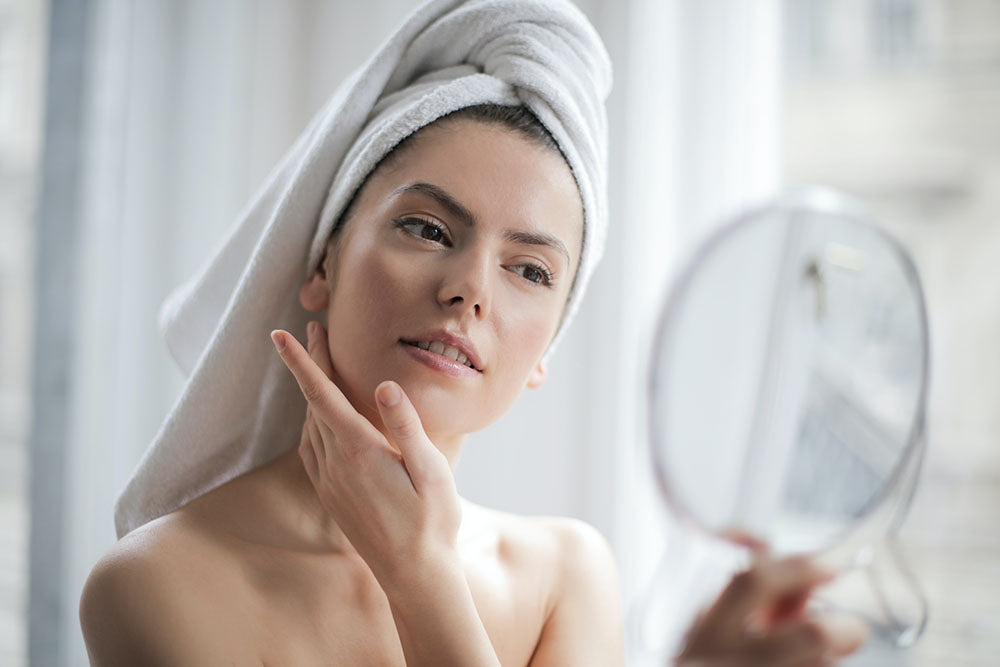
Hey there, how’s it glowin’? Recently, we shared our top five skincare ingredients to avoid combining in your daily routines but today, we’re breaking down which skincare ingredient combinations work well together! From vitamin C and glycolic acid to niacinamide and salicylic acid, these ingredient pairings are sure to be friendly to your fellow pores and potential pimples. If you want to learn not only how to get the most of your products but also how to maximize your skincare routine, keep scrolling!
Vitamin C + Vitamin E
Paired together, these two vitamins make the ultimate skin superhero duo. Like Captain America and Falcon, vitamin C and vitamin E are optimized and work best when combined.
When vitamin C, a highly acidic antioxidant, is applied to the skin, it triggers the skin to heal, which boosts elastin and collagen production, leaving behind a tight, smooth, and bright complexion. And don’t forget that vitamin C also helps prevent skin aging and fight UV damage! And then in comes vitamin E. When added, it can further help combat radiation and minimize other harmful effects. As a thank you, vitamin C then helps to regenerate vitamin E, making it even more powerful. Our product pick for moisturizing and revitalizing skin? My Organic Zone’s Vitamin C Serum of course!
Vitamin C + Glycolic Acid
While this skincare twosome is effective, it’s important to note that it may not be suitable for all skin types. Like its pal, vitamin C, glycolic acid works to enhance collagen production. When combined, both ingredients can significantly reduce pore size and improve both hyperpigmentation and skin texture. Talk about a triple threat!
Niacinamide + Retinoid or Retinol
Although retinoids, retinol, and other vitamin-A derivatives are popular ingredients for fighting acne and aging, many shy away from them because they can initially cause irritation such as redness, flaking, and extreme dryness. But what’s a skincare junkie to do when the impressive benefits of retinol are far too good to pass up?! For this reason, niacinamide is important to incorporate into your routine as it helps to reduce water loss caused by retinoids.
Niacinamide therefore counteracts the dehydrating effects of retinoids while they continue to do what they do best: reduce pigmentation, boost collagen, and increase both hydration and skin cell renewal. In need of a new moisturizing mate that minimizes breakouts, absorbs quickly, and improves skin tone? Try our Retinol Cream with aloe vera and hyaluronic acid!
Niacinamide + Salicylic Acid
No one likes the appearance of large pores, especially Regina George.
If you find yourself starring back at an oily complexion, chances are your skin’s sebum production is in excess, which can cause blockages in these small skin openings. But have no fear, niacinamide and salicylic acid are here to work their magic! This skincare ingredient combination helps shrink pore size to achieve seamlessly smoother skin. How?
By reducing the glyceride and fatty acids of surface sebum, niacinamide works alongside salicylic acid to reduce overall sebum production. The latter is also oil-soluble, which means it can effortlessly penetrate deep into your pesky clogged pores by loosening and detaching built-up debris and dead skin cells that have accumulated within your skin’s hair follicles. Niacinamide also reduces redness and pigmentation, while salicylic acid boosts collagen levels and improves overall skin elasticity.
Zinc Oxide + Iron Oxide
SPF? More like YES-PF. If you haven’t noticed by now, sunscreen is the Holy Grail of skincare, so when you opt for sun protective products that contain these two oxides, your UV exposed skin is sure to thank you.
Zinc oxide, an inorganic mineral, protects the skin from harmful UVA and UVB rays by reflecting and scattering light, which is why it’s a staple ingredient in sunscreens. While zinc’s pal, iron oxide, is not an approved sunscreen compound, it’s often added to mineral-based sunscreens to reduce undesirable (and annoying) white cast that occurs when working these products into our skin. When added to sunscreens, iron oxide broadens UV protection into longer UVA and visible light spectrums, further shielding our skin from the sun. Wavelengths of visible light can also increase melanin production, so it’s important for those with hyperpigmentation and melasma to take note of this sunscreen sidekick.
The Bottom Line
There’s safety (and in this case, increased benefits) in numbers and when used simultaneously, the above ingredients are sure to compliment and enhance one another. When purchasing your next product (or three), remember to keep these dynamic duos in mind. These skincare ingredient combinations may just become your new and favorite skin saviors!

